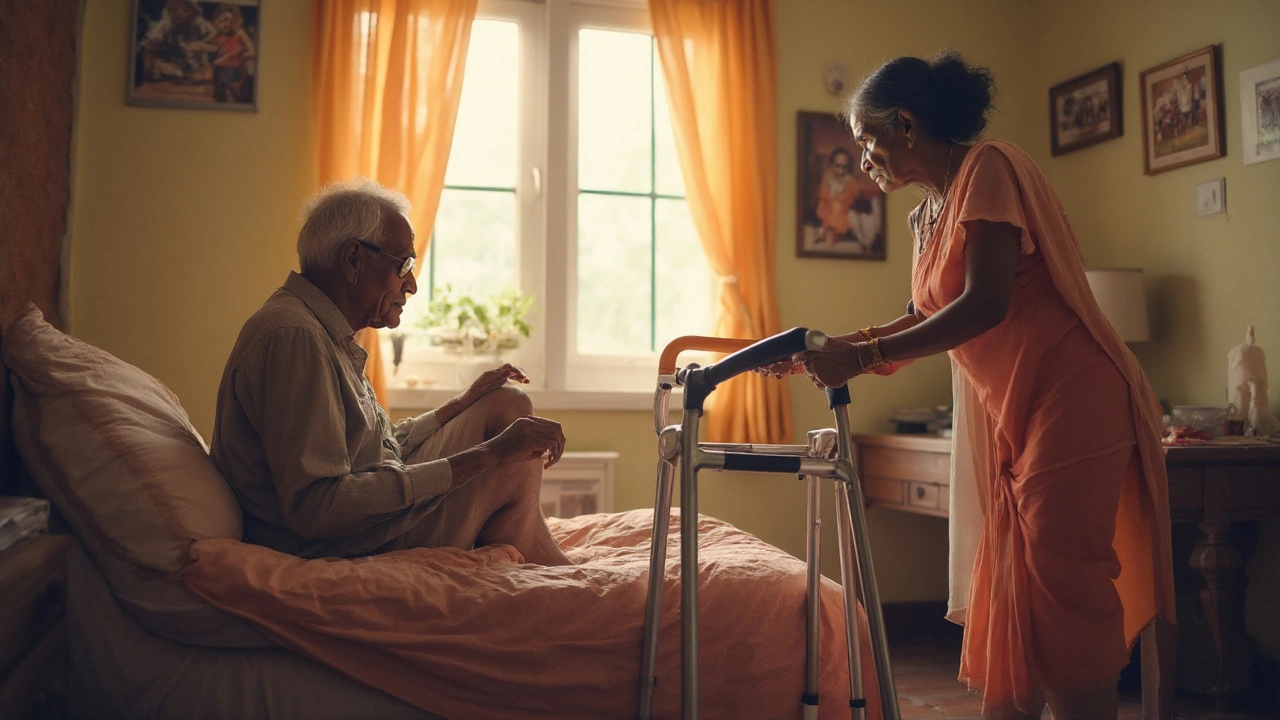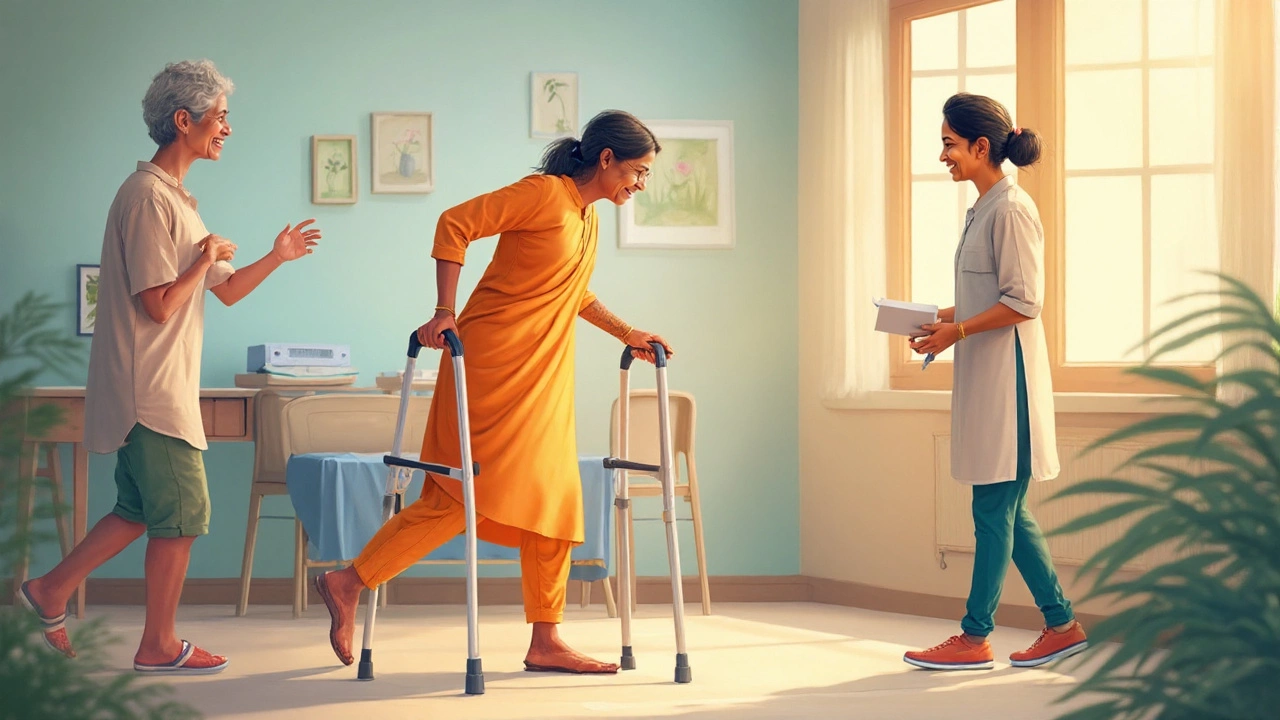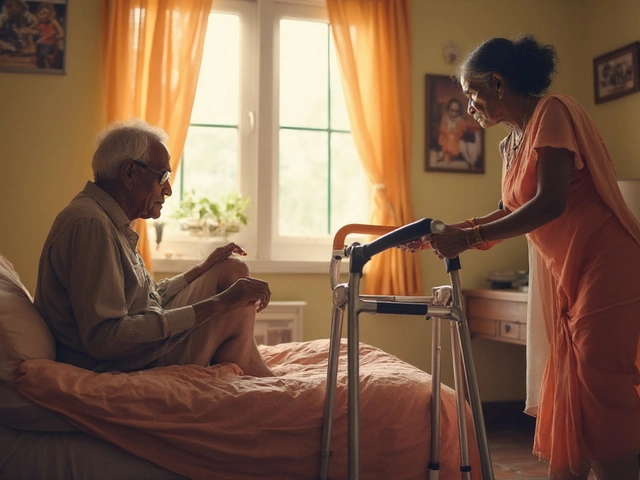
Maybe you’ve seen those chirpy TV ads with folks dancing around after a knee replacement, but the reality? The hardest part of knee replacement recovery hits like a ton of bricks pretty much right after you wake up in that hospital bed. It’s not just about tackling pain, and it’s not only a battle with your knee. Anyone who’s gone through this surgery knows: getting your life back feels like wrestling a stubborn bear – and the bear bites back, especially at night when you try to sleep. Why does it take so long to bend the new knee, and why does every “easy” daily activity feel like a marathon? That lingering ache, the slow march toward bending and straightening, and the mental game that keeps playing in your head – they’re all part of the grind most people underestimate. Let’s pull back the curtain and get real about what’s truly tough after knee replacement and how to fight through it.
Facing the Real Pain: More Than Just Sore Muscles
Picture this: you wake up after surgery thinking the worst is over, but the actual journey has just started. The initial shocker for most people is the intensity of the pain right after a knee replacement. Yes, doctors talk about pain management plans and yes, there are nerve blocks and powerful meds. But let’s be clear: the pain is raw, gnawing, and it’s not just in your new knee. It often radiates down your leg, sometimes even into the back or hips from lying in unfamiliar positions.
Mornings hit the hardest. The knee stiffens up overnight and just swinging your legs out of bed can make you gasp. If you think painkillers solve it, think again—most people can only take them for so long before worrying about side effects or getting foggy. The real enemy is stiffness mixed with pain, and the two just love to hang out together. Physiotherapists will ask you to move early, sometimes just hours after surgery. It feels insane, maybe even cruel, but it stops your new joint from locking up. Cold packs offer some relief, but there's nothing magical about them—you’re still going to grimace your way through those first steps each day.
Another often overlooked factor? Swelling. Your knee swells up like a balloon after surgery and that pressure hurts. Some people compare the sensation to having your knee squeezed in a vise. Elevating your leg helps take the edge off, but every time you lower it, gravity stirs up a throbbing ache again.
Even if you’re committed to your exercises, pain can quickly suck the motivation away. Every stretch seems to lead to more soreness. It’s all about pacing. If you push too hard, the pain gets worse. If you don’t push enough, you risk losing motion. Some doctors mention the “window of opportunity” right after surgery—this is when your scar tissue is soft and flexible, so the movements hurt but make a real difference. If you miss that window, you might get stuck with poor mobility for good. That’s enough to keep a lot of people up at night, literally.
People also forget about the weird nerve sensations: pins and needles, numb spots, even sharp zaps running down the shin. These are normal but totally unnerving. It just adds one more confusing layer to the pain puzzle. If you want some practical tips: ice early and often, keep moving even when it seems impossible, stay ahead of your pain medications (don’t let it catch up to you), and use extra pillows to boost comfort in bed. Above all, remind yourself the pain doesn’t stick around forever. Most folks see a major drop-off in discomfort by the six-week mark, but those early weeks? They’re a real test.

Regaining Mobility and Independence: Every Step Counts
No one tells you just how hard it is to relearn basic stuff after knee replacement. Walking even twenty steps can feel like crossing the Sahara at first. Your brain thinks, "It’s my leg, I know how to walk," but your body says, "Nice try." The hardest mental hurdle is accepting that progress creeps along in inches, not miles. The first big victory? Standing up from a chair without using your hands. Sounds small, but it’s huge.
Mobility isn’t just about muscle—it’s a combination of strength, flexibility, and nerves speaking the same language again. The problem is, after surgery, the knee is swollen, stiff, and weak. Lifting your leg in bed requires a Herculean effort, and those first few bathroom trips with a walker? Nerve-wracking. The fear of falling is real, especially if you’re used to being independent. That fear can slow people down, sometimes making them hesitate or flat-out refuse to move, which leads to… even more stiffness and weakness. You get stuck in a cycle pretty quick.
Climbing stairs turns into an epic quest. Physical therapists have a favorite line: “Up with the good, down with the bad.” Sounds simple, but coordinating everything when your knee feels like a block of wood isn’t easy. You also have to re-learn the rhythm of walking, so you don’t limp and hurt your back or hips. Every part of your body compensates for the knee that’s out of commission, which triggers all sorts of other aches.
Another thing: regular daily activities become mini-obstacles. Taking a shower? You have to plot every movement. Cooking or making tea means standing for longer than you thought possible, and suddenly, your stamina crashes. Getting into or out of a car feels like negotiating a puzzle with a time limit, and going out in public stirs up anxiety about being bumped or jostled.
The best advice? Break everything into chunks. If your physical therapist gives you five exercises, do them one at a time throughout the day. Little wins build up fast. Track progress. Have a list on your fridge or phone with milestones: “Bend knee to 90 degrees,” “Walk around the block,” “Climb two stairs.” Every box you tick off is a reason to celebrate.
Assistive devices seem awkward at first, but they’re lifesavers. Don’t ditch the walker or cane too soon thinking it’ll speed things up—you might fall, and that’s the last thing you need. Instead, use them with pride. Even Olympic athletes use the best tools for the job. Seek out tricks to make life easier: raised toilet seats, non-slip bath mats, and a small stool in the shower. Wear shoes with good grip, avoid pets underfoot, and keep pathways clear. There’s no shame in making your recovery environment as safe as possible.
As weeks go by, the swelling and stiffness start to ease. There’s light at the end of the tunnel. Most people can walk independently without a limp by three months, but getting full strength back can take six months or more. Stick with it—a little stubbornness helps. Remember, mobility is the real currency of your recovery, and every step counts, literally.

The Emotional Battle: Staying Positive When Progress Is Slow
No one warns you about the emotional rollercoaster that comes with knee replacement recovery. The body and mind are tangled together: if you’re hurting, you’re cranky. If you’re losing sleep, you get even more frustrated. There’s a real sense of grief for the way things used to be. Maybe your knee was shot, but at least you knew its quirks. Now everything feels foreign.
First thing to realize: setbacks are normal. One day you’re bending your knee like a champ, the next it’s stiff as a board. Mood swings hit hard, especially when friends or family try to cheer you up with “You’ll be running marathons soon!” These words can feel out of touch when you can barely get to the bathroom in time. Try to laugh at the little mishaps—humor is powerful medicine.
The hardest days often happen when progress stalls. Everyone heals at their own pace, but it’s tough not to compare yourself to others. There’s also the awkward feeling of being dependent on others for meals, chores, rides, and support. If you value independence, this stings the most. Some start to feel like a burden or get impatient with loved ones. It’s totally normal to feel angry, sad, or both at the same time.
Frustration isn’t the only emotion that shows up. Anxiety creeps in, especially when you wonder: “Will my knee ever feel normal?” That’s when routine—boring as it sounds—becomes a lifesaver. Waking up at the same time, taking meds as scheduled, doing your rehab sessions, and eating healthy can restore a sense of control. Small wins matter. Maybe today you bent your knee a few more degrees, or walked a little farther. Celebrate that.
Reach out for help. Recovery support groups (both in-person and online) make a huge difference; talking to others who get it feels like lifting a weight off your chest. If depression or anxiety starts to take over, chat with your doctor—a temporary boost from medication or counseling isn’t a sign of weakness. You’re human.
Sleep is another sneaky source of stress. Long nights with a throbbing knee leave you exhausted. You’re stuck in a cycle of poor sleep and low mood. Try using extra pillows to find a new position, invest in a body pillow or wedge, and talk to your healthcare provider if insomnia gets out of hand. Don’t resort to endless internet scrolling—consciously unplug and give your brain a chance to wind down.
Bear in mind—and here’s a fact orthopedic studies hammer home—most people get 80% of their recovery in the first three months, but the last 20% often takes the rest of the year. That’s the final challenge: keeping a positive attitude and adjusting your expectations as you inch toward that full recovery. Lean on friends, treat yourself kindly, and take time to notice gains, even if they’re small. Maybe you can walk farther, or you finally managed to put on your own socks. This is progress you fought hard for.
Don’t be surprised if, a year later, you still sometimes think about your old knee. Adjusting to a new normal is an emotional climb as much as a physical one. Stay stubborn, stay hopeful, and remember, each step forward—even a tiny one—is you reclaiming independence. That’s what the hardest part of knee replacement recovery is all about: pushing through, one unglamorous, heroic day at a time.





Rohan Talvani
I am a manufacturing expert with over 15 years of experience in streamlining production processes and enhancing operational efficiency. My work often takes me into the technical nitty-gritty of production, but I have a keen interest in writing about medicine in India—an intersection of tradition and modern practices that captivates me. I strive to incorporate innovative approaches in everything I do, whether in my professional role or as an author. My passion for writing about health topics stems from a strong belief in knowledge sharing and its potential to bring about positive changes.
view all postsWrite a comment